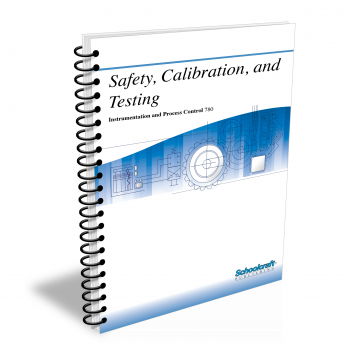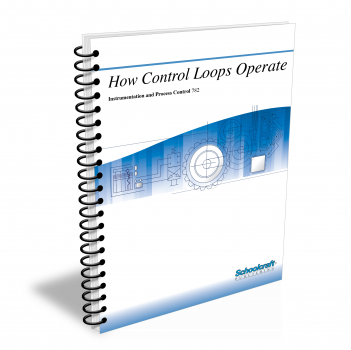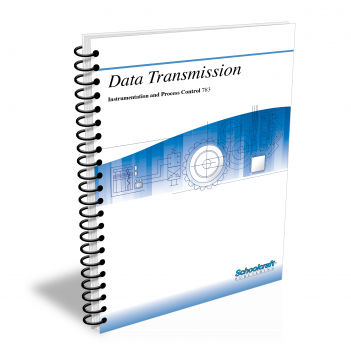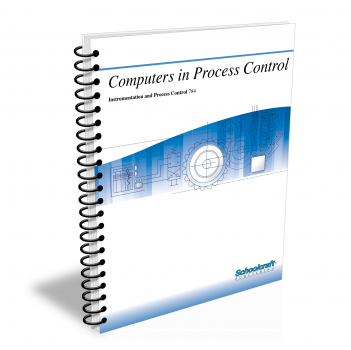Working with Controllers
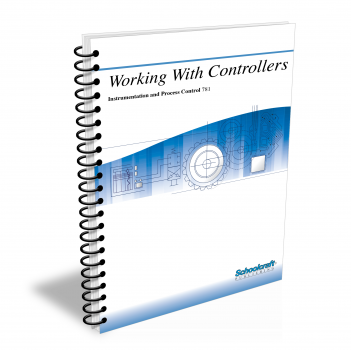
Course Number: 781
The Working with Controllers textbook describes the purposes and kinds of controllers and their relationship to other components in process control systems. It explains the concepts of current-, position-, and time-proportioning control and compares the operation of several kinds of controllers. It describes the operation of proportional, integral, and derivative modes, and discusses tuning procedures for each. Also covered are cascade, feedforward, ratio, and auctioneering control systems and other operations. Finally, it describes ways to eliminate or reduce controller problems.
Does your curriculum require additional topics not included in this textbook? Build a customized version of the Working with Controllers textbook below.
Recommended Contact Hours – 8
Preview a Chapter
Available Supporting Material
- Table of Contents
- Exam Copies
- Suggested Titles
Table of Contents
Chapter 1: Introduction to Controls
Topics: Process dynamics; Current, position, and time proportioning; Controller modes, actions, terminology, and options; Loop accuracy
Learning Objectives:
- Describe the kinds of controllers most often used in industrial applications.
- Discuss six important problems of process dynamics that controllers must overcome.
- Compare the actions of current proportioning, position proportioning, and time proportioning.
- Name four kinds of controller alarms.
- Discuss the importance of safety in control loops.
Chapter 2: Controller Operations
Topics: Automatic/manual control; Range and span; Direct-, reverse-acting, on/off, and proportional controllers; Current, time, and position-proportioning control; Control strategies
Learning Objectives:
- Explain why automatic/manual control is necessary.
- Explain how on/off controllers work and discuss the difference between on/off and proportional controllers.
- Describe a basic controller tuning process.
- Describe current-, time-, and position-proportioning controllers and name possible uses for each.
- Explain how split control works.
Chapter 3: Controller Modes and Tuning
Topics: Proportional mode; Offset; Integral mode (reset); Derivative mode (rate); Single, two, and three mode controllers; Loop tuning; Step-change response
Learning Objectives:
- Describe the effect of the proportional, integral, and derivative modes on a controller's response to process changes.
- Discuss proper uses for the proportional, integral, and derivative modes.
- Explain how the proportional, integral, and derivative modes affect the tuning of a controller.
- Describe the procedure for tuning a controller by the step-change response method.
Chapter 4: Special Controller Applications and Options
Topics: Cascade, feedforward, ratio, and auctioneering control; Hardware options; Remote setpoint; Auxiliary outputs; Indicators; Limits and alarms
Learning Objectives:
- Compare cascade, feedforward, ratio, and auctioneering control strategies.
- Describe three optional features used with auto/manual controllers.
- Discuss the use of remote setpoint, auxiliary outputs, and several kinds of indicators as hardware options for controllers.
- Explain how input signal conditioning, anti-reset windup, adaptive gain, error-squared calculation, and setpoint/output ramp and clamp affect controller operation.
- Discuss the use of limit and alarm options available for controllers.
Chapter 5: Maintaining Controller Systems
Topics: Preventing problems; Electrical noise and suppression; Regulating power; Electrical coupling; Temperature variation; Troubleshooting
Learning Objectives:
- Describe five ways of suppressing electrical noise.
- Discuss the effects of an inadequate power supply and explain how to regulate it.
- Describe ways to avoid the harmful effects of electrical coupling.
- Explain how temperature variations affect controllers.
- Describe the kinds of equipment and proper connections needed to test controllers.
- Discuss elements of effective controller maintenance and troubleshooting.
Request Exam Copies
Exam Copies
Ready to see a copy of our textbooks? After selecting which textbooks you’d like to review for your course, you can submit your request by either logging in or creating an account so we know where to ship your exam copies. A representative from Schoolcraft will contact you to confirm and finish processing your request.
Exam copies are always free and yours to keep.
Selected Exam Copies
none selected
* Maximum of five copies can be ordered
